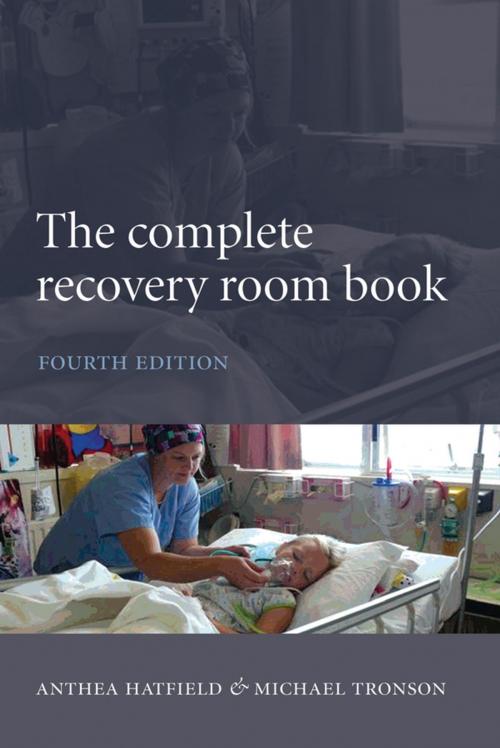The Complete Recovery Room Book
Nonfiction, Health & Well Being, Medical, Patient Care, Pain Medicine, Specialties, Anesthesiology| Author: | Anthea Hatfield, Michael Tronson | ISBN: | 9780191008047 |
| Publisher: | OUP Oxford | Publication: | November 27, 2008 |
| Imprint: | OUP Oxford | Language: | English |
| Author: | Anthea Hatfield, Michael Tronson |
| ISBN: | 9780191008047 |
| Publisher: | OUP Oxford |
| Publication: | November 27, 2008 |
| Imprint: | OUP Oxford |
| Language: | English |
The care that a patient receives in the first hours after surgery is crucial to minimizing the risk of complications such as heart attacks, pneumonia, and blood clots. As the patient awakes from their drug-induced coma, it takes time for them to metabolize and excrete these drugs, during which period they remain unable to care for themselves, and at increased risk of harm. The body undergoes extreme physiological assault from pain, hypothermia, hypoxia, acid-base disturbance and shifts in blood volume. The recovery room staff must manage these symptoms in both comatose and physiologically unstable patients, and deal with the immediate post-operative care of surgical patients by attending to drips, drains and dressings. It is an environment where many skills and equipment are brought together, and successful development of these units has significantly reduced the number of deaths from preventable conditions. In helping the patient from the high pressure operating theatre to the wards, nurses, surgeons and anaesthetists will be required to manage day-to-day problems, but also make difficult decisions. Previous editions of this book have established it as the definitive guide to setting-up, equipping, staffing, and administering this acute care unit. It includes basic science such as physiology and pharmacology, specific symptoms including pain and vomiting, and has chapters devoted to the unique post-operative needs of individual types of surgery. This new edition brings this important text up to date, including new material on risk management, administration and quality control; expanded sections on anaesthetic practice and infection prevention; and incorporating the recent developments in pain control, nausea and vomiting, care of children, pregnancy, and care of the cardiac patient.
The care that a patient receives in the first hours after surgery is crucial to minimizing the risk of complications such as heart attacks, pneumonia, and blood clots. As the patient awakes from their drug-induced coma, it takes time for them to metabolize and excrete these drugs, during which period they remain unable to care for themselves, and at increased risk of harm. The body undergoes extreme physiological assault from pain, hypothermia, hypoxia, acid-base disturbance and shifts in blood volume. The recovery room staff must manage these symptoms in both comatose and physiologically unstable patients, and deal with the immediate post-operative care of surgical patients by attending to drips, drains and dressings. It is an environment where many skills and equipment are brought together, and successful development of these units has significantly reduced the number of deaths from preventable conditions. In helping the patient from the high pressure operating theatre to the wards, nurses, surgeons and anaesthetists will be required to manage day-to-day problems, but also make difficult decisions. Previous editions of this book have established it as the definitive guide to setting-up, equipping, staffing, and administering this acute care unit. It includes basic science such as physiology and pharmacology, specific symptoms including pain and vomiting, and has chapters devoted to the unique post-operative needs of individual types of surgery. This new edition brings this important text up to date, including new material on risk management, administration and quality control; expanded sections on anaesthetic practice and infection prevention; and incorporating the recent developments in pain control, nausea and vomiting, care of children, pregnancy, and care of the cardiac patient.















